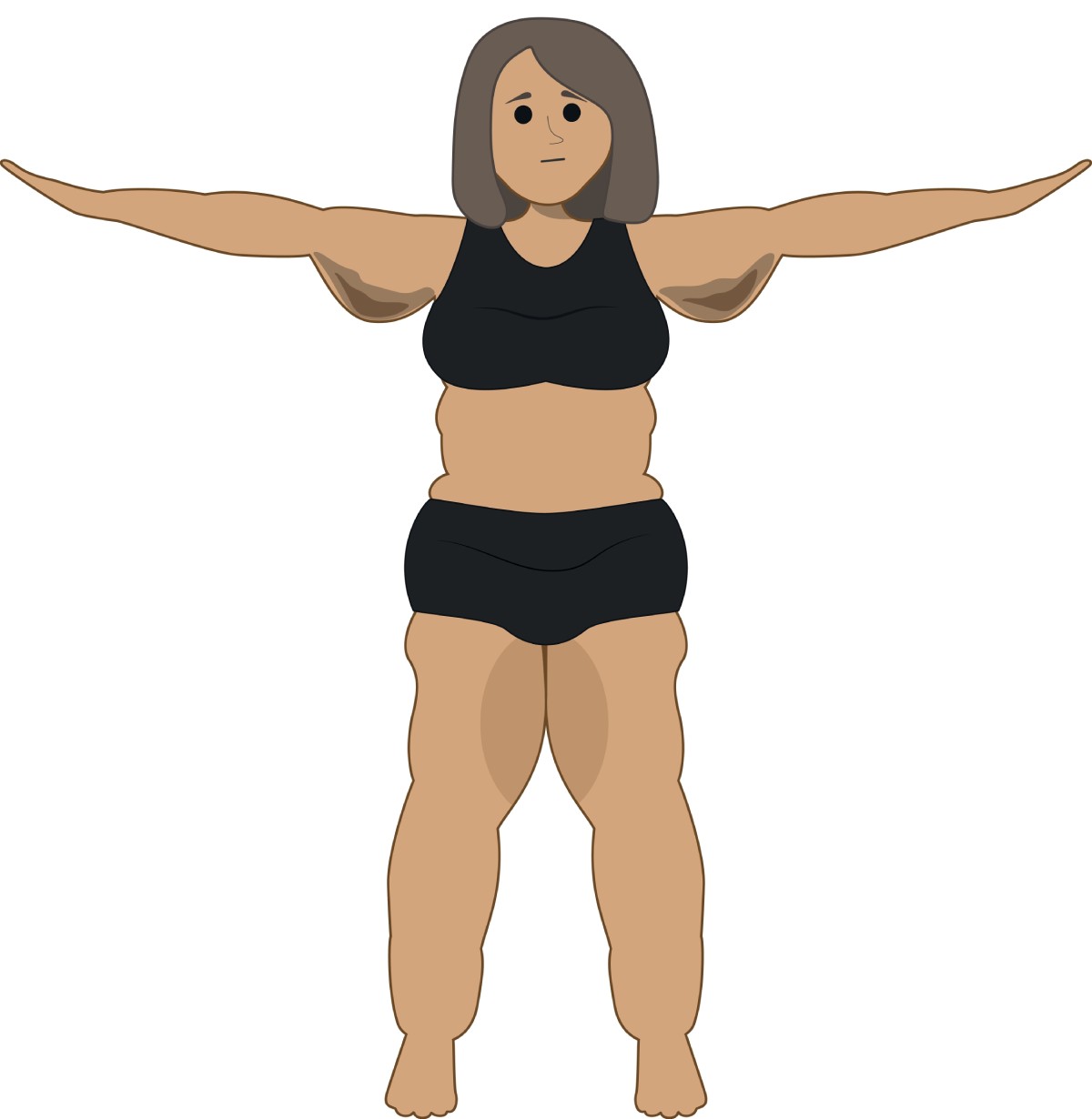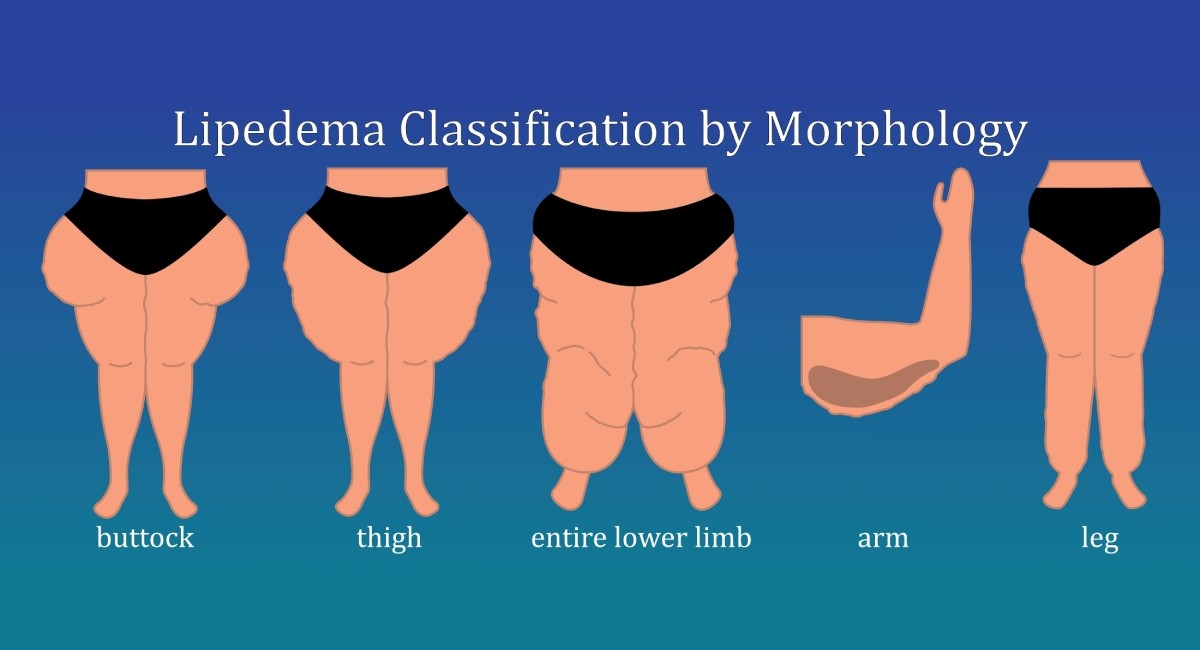Cuffing with Lipedema: What it means and how to treat it
Lipedema is a chronic condition that primarily affects women and is characterized by the abnormal buildup of fat cells, most commonly in the arms, legs, and abdomen. This disorder frequently causes discomfort, swelling (edema), and difficulties with walking or exercising. One of the most recognizable signs of lipedema is “cuffing,” where a distinct ring of fat forms around the ankles, knees, wrists, elbows, etc. Dr. Azouz, a board-certified plastic surgeon and expert in lipedema surgery, treats patients from across the country at his Lipedema Center of Excellence in Dallas, Texas, providing specialized care for lipedema patients.
Understanding Cuffing in Lipedema
Most frequently observed above the ankles or wrists, cuffing in lipedema is the abrupt, band-like transition between swollen fat and unaffected tissue. This characteristic gives the appearance of a “fat cuff” that ends abruptly at the hands, elbows, knees, and/or feet, which are normally unaffected by lipedema, compared to lymphedema, which causes swelling throughout the entire limb. This dramatic contour change is sometimes misinterpreted as fluid retention or general weight increase. Recognizing cuffing is important for accurate diagnosis and appropriate treatment.
Why Cuffing Happens in Lipedema
 Cuffing in lipedema occurs due to the disproportionate buildup of fibrotic, painful fat that resists diet and exercise. This abnormal fat compresses surrounding lymphatic vessels, worsening swelling and creating a sharp, shelf-like transition, often noticeable at the ankles or wrists. The affected areas frequently feel tight and tender, causing bruising, which can impair circulation and limit mobility. As a result, individuals may experience daily discomfort and difficulty wearing shoes, socks, or jewelry.
Cuffing in lipedema occurs due to the disproportionate buildup of fibrotic, painful fat that resists diet and exercise. This abnormal fat compresses surrounding lymphatic vessels, worsening swelling and creating a sharp, shelf-like transition, often noticeable at the ankles or wrists. The affected areas frequently feel tight and tender, causing bruising, which can impair circulation and limit mobility. As a result, individuals may experience daily discomfort and difficulty wearing shoes, socks, or jewelry.
Several factors contribute to cuffing:
- Hormonal Shifts: Changes during puberty, pregnancy, and menopause can trigger or worsen lipedema.
- Genetic Susceptibility: Many individuals with lipedema report a family history of similar fat distribution patterns, suggesting a strong hereditary component.
- Progressive Fat Fibrosis: As lipedema advances, the abnormal fat can harden into fibrotic tissue, leading to pain, tenderness, and a dense texture that doesn’t respond to diet or exercise.
- Impaired Lymphatic Flow (Lipolymphedema): In later stages, lipedema may be accompanied by lymphatic dysfunction. This can exaggerate the difference between the affected and unaffected areas by causing more swelling over the cuffed regions.
Signs and Symptoms of Lipedema Cuffing
- Fat buildup with a sharp transition at the ankle, knee, elbow, and/or wrist
- Painful or tender tissue in the cuffed area
- Disproportionate limbs with unaffected feet or hands
- Easy bruising and swelling
- Feeling of heaviness or tightness in the arms or legs
Treatment Options for Cuffing with Lipedema
While conservative treatments such as compression therapy, manual lymphatic drainage, and anti-inflammatory diets can help manage symptoms, they do not eliminate the fibrotic fat that causes cuffing and discomfort. Dr. Azouz provides lipedema liposuction, the gold standard surgical procedure for removing lipedema fat tissue and treating the underlying cause of the problem. This advanced procedure can significantly improve mobility, reduce pain, and enhance overall quality of life. For many patients, surgery not only alleviates physical symptoms but also helps restore confidence and ease in daily activities, such as wearing clothes more comfortably and moving with greater freedom after years of struggle.
Schedule a Consultation with Dr. Azouz
Don’t write off cuffing around the knees, elbows, ankles, and/or wrists as typical fat or swelling; it could be an indication of lipedema, a real and treatable condition. Numerous patients have regained their lives and reduced their symptoms after surgery with board-certified plastic surgeon Dr. Azouz. Furthermore, through the Lipedema Center of Excellence, Dr. Azouz provides individualized care plans and assists patients in obtaining insurance approval for lipedema surgery. Call the office at (972) 702-8888 or contact us online to arrange a consultation with Dr. Azouz if you have lipedema or suspect you may have it.
Written by Naadira Kateeb and Henna Dahya on behalf of Azouz Plastic and Cosmetic Surgery
Posted on behalf of
